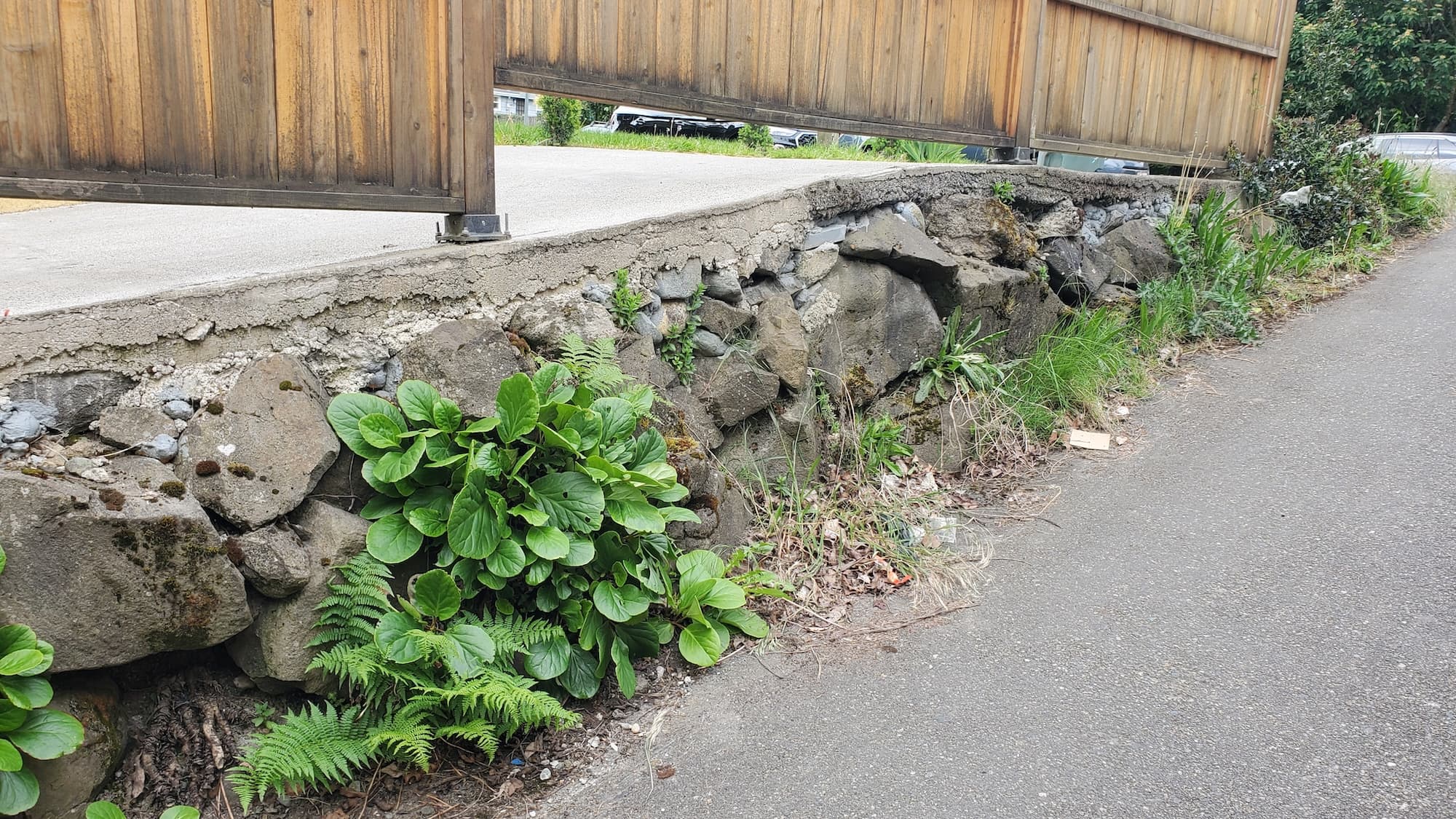West Seattle Remove ladder fuels (fire risk cleanup)
Homeowner’s Issue
West Seattle yards are famously green — and that’s the problem when it comes to ladder fuels. Our hills and ravines collect thin topsoil over dense glacial till and old fill, so roots can sit shallow while understory brush, ivy, and blackberry thickets proliferate. Combine that with heavy winter rains, summer drying, and the occasional wind event, and you get downed branches, stacked litter, and low tree limbs that create a vertical path for fire. Shady north-facing slopes and properties under big cedars develop moss and dense groundcover that hold moisture in winter but burn readily in late summer.
Near Alki and Lincoln Park, salt spray and wind stress can make shrubs brittle; in the inland pockets around Admiral and High Point, compacted lawns and poor drainage concentrate debris along driveways and gullies. HOAs and neighbors expect tidy lower limbs and clear access; failing to manage ladder fuels raises the wildfire risk and drags down curb appeal. We focus on practical defensible-space work that respects West Seattle’s microclimates — thinning, selective pruning, and debris management — all with sustainable methods and zero herbicides. This isn’t aesthetic pruning only: it’s targeted risk reduction tailored to our local soils, exposures, and the typical plant pressures you see here.
Our Quality Service
We assess each property from the street and, if needed, with a quick walk-through. Then we:
- Identify ladder-fuel zones (low branches, dense understory, stacked debris).
- Use hand tools, pole saws, and a chipper for safe, controlled removal.
- Stabilize disturbed slopes with erosion-control fabric or mulch where needed.
Timelines: small lots usually completed in half a day; typical single-family jobs are a day. Steep or heavily overgrown sites may take 1–3 days. We schedule around Seattle’s seasons — heavy pruning and hauling in late spring to early summer when ground is dryer, and avoid big cuts during nesting season where possible.
Local insight: expect clay pockets and compacted fill in many yards, drainage channels along slopes, and moss in shaded to north-facing beds. We work with those realities to reduce fuel ladders while improving long-term plant health.
Benefits: safer property, cleaner sightlines for inspections, lower maintenance needs, and improved curb appeal — all done with sustainable practices and no herbicides.
What’s Included
- Site assessment and prioritized removal plan.
- Pruning of lower limbs and selective thinning of understory.
- Removal of dead material, stacked brush, and combustible debris.
- Chipping on-site or haul-away to city green-bin / dump (your choice).
- Final sweep and tidy of access points and walkways.
Options / Upgrades:
- Mulch refresh + fabric (helps suppress weeds and retain moisture).
- Organic weed control and hand-removal for blackberries and ivy.
- Native, fire-resistant planting suggestions and installation.
- Erosion control (coir logs, jute fabric) for steep slopes.
- Full haul-away vs. on-site chipping for reusable mulch.
Before & After / Expectations
- Noise & mess: chainsaws and a chipper are part of the job; expect noise while work is active and a clean site afterward.
- Access: we need clear driveway or street access for equipment; tight alleys can limit chipper use and shift to more haul-away.
- Debris handling: we can chip on-site for mulch, haul to the green bin, or take waste to the dump (dump fees may apply).
- Timeline: allow 1–3 days for standard lots; we’ll give a clearer window in the estimate.
Care tips for West Seattle:
- Best pruning window is late spring to early summer after heavy rains recede and before peak dry season.
- Water new plantings deeply but infrequently during summer; city water rules can affect irrigation timing.
- Remove blackberry canes in early summer before berries set to reduce seed spread.
- Reduce moss by opening canopy for light and improving drainage on north-facing slopes.
FAQs
Q: Do you use herbicides?
A: No. We use mechanical removal, hand-pulling, and organic control methods only.Q: How long before results hold?
A: Proper pruning and debris removal cut fuel loads long-term; expect follow-up maintenance annually or biannually depending on exposure.Q: Will you remove large limbs on steep slopes?
A: Yes, we have experience on West Seattle slopes, but steep sites may need extra time and erosion control measures.Q: Do you handle permit or HOA requirements?
A: We’ll advise on typical HOA expectations and best practices; permit needs depend on scope and species and are handled case-by-case.
Call to Action
If you’re in West Seattle and want a practical, sustainable ladder-fuel cleanup — no fuss, no herbicides — we’ll give you a straightforward estimate and a quick booking window. Trusted local crew, honest timelines, and cleanup that actually lasts.
Email: neatandtidyseattle@gmail.com
Phone: 206-538-9344
Book a free estimate and protect your property before the dry season.










